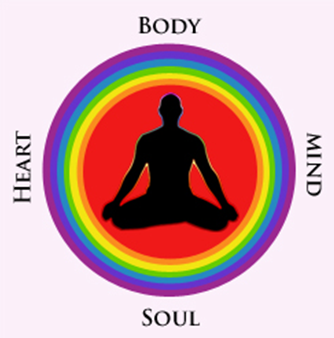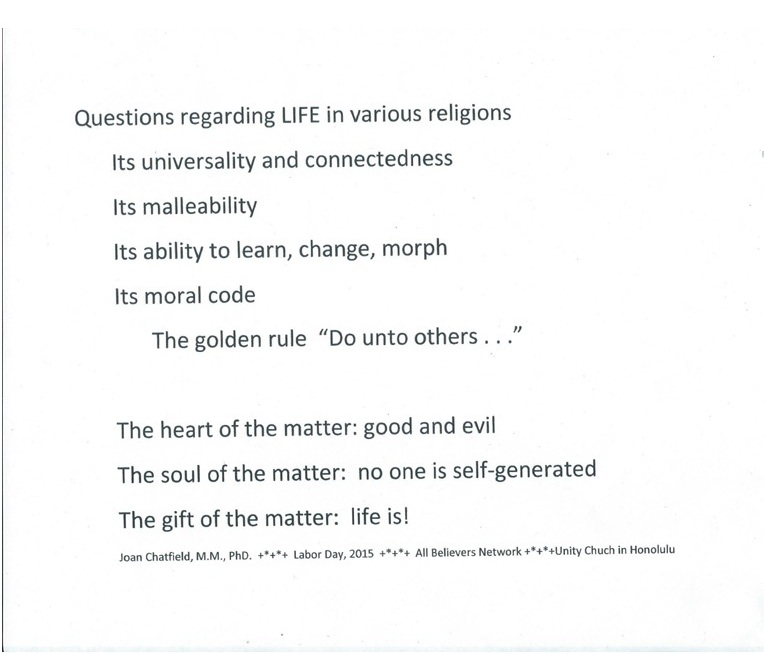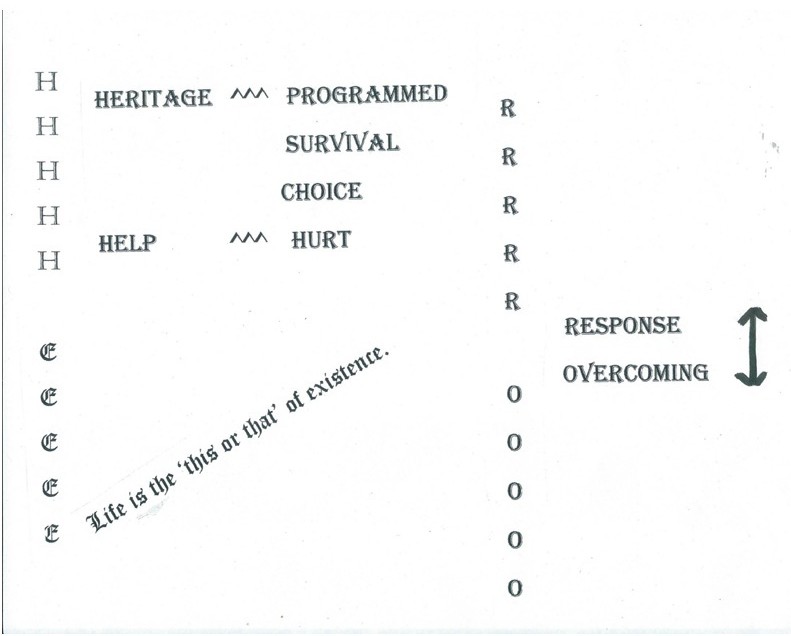© 2004-





Website developed by: BestWeb35.com
UPCOMING BELNET CONFERENCE
EXPLORING SPIRITUAL LIGHT
“MUSLIM HAWKS AND DOVES: CAN THE TWAIN MEET?”
By Dr. Saleem Ahmed
Unity Church of Hawaii, 3608 Diamond Head Circle
Monday, July 13, 2015, 6:30 – 8:00 p.m.
Engrossed in our war on terrorism, overlooked is the more complex war pitching extremist Muslims against moderates in Pakistan and elsewhere. It has reportedly already claimed 150,000 lives in Pakistan alone during the past five years. Based on his research of the earliest extant documents, Ahmed believes this situation has probably resulted from the following challenges Muslims face with their sacred texts; challenges which, Ahmed believes, a vast majority of Muslims may not even be aware of:
– Qur’an, the holy book, is not arranged chronologically.
– Hadith, Muhammad’s purported sayings and actions, are also not arranged chronologically; many are also not commonly known.
– Shariah, the Muslim code of ethics, is based on incomplete information.
The problem, Ahmed emphasizes, is not with the Divine message which evolved from war to peace over 23 years, but with its handling by humans. He believes the situation can be rectified by some outside the box thinking, which he will share in his talk.
Researching Islam since the 1980s, he authored Beyond Veil and Holy War: Islamic Teachings and Muslim Practices with Biblical Comparisons (2002) and Islam: A Religion of Peace? (2008). He founded the Honolulu-
An agronomist by training, Ahmed was involved in Pakistan’s Green Revolution of the 1960s. Currently, he is a financial planner and marketer of neem tree products for personal care, pet care, and plant care.
This talk is part of Unity Church’s ongoing free monthly public lecture series, Exploring our Oneness with God and each other. Contact Unity (735-

MONDAY, MAY 29, 2017
UNIVERSITY OF HAWAII CAMPUS
DETAILS TO FOLLOW
CONTACT: SALEEM AHMED +1-808-395-5329
ALL BELIEVERS NETWORK’S 13TH ANNUAL CONFERENCE
CONCEPT OF LIFE AND AFTER-LIFE IN VARIOUS RELIGIONS
UNITY CHURCH OF HAWAII, 3608 DIAMOND HEAD CIRCLE, HONOLULU
MONDAY, SEPTEMBER 7, 2015
POINTS FOR REFLECTION
Participantsat the All Believers Network’s 13th annual conference on Concept of life and afterlife in various religions, held on Labor Day (September 7, 2015) at the Unity Church of Hawaii, were impressed by the fact that all religions, dating back 5,000+ years and found on all continents, believe that “life” does not end with death; that an afterlifetakes over. The fact that our ancestors reached this conclusion centuries ago when a journey of 10 miles took a whole day, suggests these ancestors must have been inspired by the same Unknown that guided religious leaders in more recent times. Belief in this Unknown (i.e. God), regardless of how he/she/it is described in different religions, is, therefore, the common central belief in all religions, and service to humanity, the key criterion to finding nearness to God.
Thus, and expanding on this conclusion, participants feel that: (i)God sent messengers all over the world from the beginning of human existence on earth, to guide humanity on the path of righteousness; (ii) that all messengers carried the same message: To honor God and serve humanity; and (iii) that, while death ends the physical manifestation of the earthly human experience, a spiritual manifestation begins, with the soul being accountable to God for the body’s actions during its worldly life. The righteous are rewarded with eternal nearness to God; the un-
Participants wondered that, since there is an afterlife, isn’t it possible that there is also a “beforelife”?
Recognizing that ritualistic differences between religions reflect diverse cultural norms enriching human experience in different places, participant believe the spiritual similarities transcending religions that should be honored and celebrated; a position that Hawaii’s aloha spirit upholds.
The All Believers’ Network (Belnet) (www.AllBelieversNetwork.net) explores the converging paths of religions and engages in activities supporting this goal. Participants at the above conference represented the microcosm of religions blessing our island state. This year’s conference was co-
ALL BELIVERS NETWORK (Belnet) explores the converging paths of religions. In a world beset with divisions among followers of various religions based onritualistic differences, Belnet aspires to promote the spiritualharmony underlying all. It honors all spiritual paths leading to the same Transcendental Being. Formed in 2003 and inspired by the warm aloha embracing Hawaiian Spirituality,it seeks to promote Hawaii as the world’s interfaith harmony capital. It undertakes research on topics of mutual interest, provides resource persons to schools and other groups, and actively works with others, in Hawaii and elsewhere, for global peace and harmony.
UNITY ALL BELIVERS INTERFAITH MINISTRY is an outreach commUnity Ministry of Unity Church of Hawaii that embraces Hawaii’s Spiritual and cultural diversity by exploring, sharing and expressing peace through love and acceptance. Events are held on the 2nd Monday6:30 – 8 pm at Unity Church of Hawaii, 3608 Diamond Head Circle, Honolulu.UPCOMING 2015 PROGRAMS:September: Sukyo Mahikari with Nolyn Blanchette; October: New Thought Panel November: Baha’i with Mollie Sperry
ALL BELIEVERS NETWORKMONTHLY SERIES THEMED: “NOW THAT YOU ASK ME….” inspired by the wisdom of the Tao Te Ching, a classic memoir recorded by the ancient Chinese sage Lao Tzu. It is held on the last Tuesday of the month 7:00 – 8:30 pm at The First Unitarian Church of Honolulu, 2500 Pali Highway. Contact Merritt Sakata at 808-
ACKNOWLEDGMENTS
Belnet Board: Saleem Ahmed (President), Joan Chatfield (Chair), Irene Matsumoto (Vice Chair), Harendra Panalal (Treasurer), Nolyn Blanchette, Jack Bomar, Joyce Giardina, Rafia Hasina, Raj Kumar, Manjit Reddick.
Volunteers: Jo-
Belnet Advisory Council: Baha’i: Mollie Sperry; Buddhism: Irene Matsumoto; Christianity: Joan Chatfield; Daoism: Lillian Chang; Hawaiian Spirituality: Kauila Clark; Hinduism: Raj Kumar; Islam: Jan Rumi; Jainism: Harendra Panalal; Sikhism: Manjit Reddick; Sufism: Valerie Noor Karima; Unity: Jack Bomar. We welcome advisory council members from other religions.
Conference Supporters: Baha’i Community of Hawaii; Gandhi International Institute for Peace; Harris United Methodist Church; Honpa Hongwanji Mission; Palolo Kwannon Temple; Pacific Institute for Islamic Studies; Sukyo Mahikari; The Interfaith Alliance of Hawaii; The Open Table; World Medicine Institute.
We thank the World Medicine Institute for its generous donation.
Contact Information of Program Co-
All Believers Network: Saleem Ahmed; AlohaSaleem@gmail.com; phone: 808-
UnityAll Believers Interfaith Ministry: Joyce Giardina; jgwaikiki@aol.com 808-
Web pages: www.AllBelieversNetwork.net ; www.unityhawaii.org
Schedule
9:00 am Registration and Coffee
10:00 am Welcome and Announcements – Emcee,Nolyn Blanchette, Sukyo Mahikari, All Believers Network and Unity All Believers Interfaith Ministry Board
Unity Choir
Greeting and Invocation – Rev. Dr. Jack Bomar, Senior Pastor,
Unity Church of Hawaii
The All Believers Network: Overview – Rev. Irene Matsumoto
Palolo Kwannon Temple and Vice Chair, All Believers Network
10:30 am CONCEPT OF LIFE IN VARIOUS RELIGIONS – Dr. Sister Joan Chatfield, Maryknoll Sisters and Chair, All Believers Network
Discussion
11:10 am CONCEPT OF AFTERLIFE IN VARIOUS RELIGIONS – Dr. Saleem Ahmed, Pacific Institute of Islamic Studies and President, All Believers Network
Discussion
11:50 Going Forward: Points for Reflection – Group Discussion
12:30 pm Announcement of upcoming programs: Joyce Giardina
Program closing: Peace Song
12:45 pm Lunch
2:00 pm Adjourn
Mahalo for participating with us today. We look forward to welcoming you next year! Please join us here at Unity September 14th 6:30-
and be sure we have your email to join us for future events.
UNITY-
THE ALL BELIEVERS NETWORK’S 13TH ANNUAL CONFERENCE:
CONCEPT OF LIFE AND AFTER-
IN VARIOUS RELIGIONS
WHATIS THE MEANING OF LIFE?
WHAT HAPPENS AFTER DEATH?

MONDAY, SEPTEMBER 7 (LABOR DAY), 2015
UNITY CHURCH OF HAWAII, 3608 DIAMOND HEAD CIRCLE, HONOLULU
WHO WE ARE


CONCEPT OF AFTERLIFE IN VARIOUS RELIGIONS
Saleem Ahmed, Ph.D.
Ladies and gentlemen, as we gaze in awe at the beautiful moonlit night, many questions about the meaning of life and about what happens after death come to our mind. Centuries ago, the same questions must have also intrigued our ancestors. Since science has not yet provided any satisfactory answer, we seek answers from various religions. These often provide fascinating and colorful accounts. I will summarize views of the following 12 religious groupings: Ancient Egyptian, Mesopotamian, Norse-
Ancient Egyptians believed that the ultimate judge of our actions is Osiris, god of the under-
Ancient Mesopotamians (Babylonians, Akkadians, and Sumerians) believed lifecontinued in the netherworld as an eṭemmu,a spirit. Etemmu was a cosmic opposite of the heavens and a shadowy version of life on earth. Metaphysically, afterlife was at a great distance from the living; physically, only a short distance from the earth.Death established a new set of obligations between the living and the dead. Ereshkigal, goddess of the Underworld, was the ultimate judge. The soul was transported by boat.
In Norse mythology, the soul had three paths:Helheim, home of the goddess Helheim; Valhalla, Hall of the fallen; and Folkvang, thefield of warriors.After death, we continued living, but in a different form. Odin was the underworld god, and two of his goddesses were Helheim and Valkyrie.
In the Greco-
In the Native Australian mythology, the concept of “Dreaming” existed before birthand continued after death. “Dreamtime” represents an individual’s entire ancestry, culminating in the idea that all worldly knowledge is accumulated through one’s ancestors. Dreamtime defined the patterns of life, death, and regeneration, and was represented in vivid colors.
In the Aztec mythology, heavenly rewards were reserved for four groups: (1) warriors who joined the war god Huitzilopochtli in battle; (2) those who agreed to be sacrificed; (3) women who died in childbirth; and (4) people killed by lightning, drowning, certain diseases, or violent death. Depending upon one’s level of righteousness, he or she could be assigned to one of 13 heavens. Since gods and goddesses were fed by human sacrifice, people willing to be sacrificed were rewarded in the afterlife.
All Native American religions believe in the Great Spirit and reincarnation. To them, since Nature abounds with Spirits, respect for plants and animals is essential, with the dead and living being respected equally. The concept of the soul going to the “Happy Hunting Grounds” after death prevails.
Among Native African religions,since life simply continues in another realm after death, “life” and “death” are not mutually exclusive. Human existence is seen as a dynamic process involving the increase or decrease of “power” or “life force,” of “living” and “dying“. There are different levels of life and death, depending upon one’s behavior. Life and death among many Africans involves colorful spiritual dances.
Among the four East Asian religions,Buddhism stresses following the “middle path” to attain Nirvana.Karma is the sum of a person’s actions in this and previous states of existence, and also determines a person’s future existence; Confucianismemphasizes correct behavior toward the living and the dead and focuses on the importance of family and social harmony; Daoism emphasizes the mystical way of nature andin being in harmony with all lifeforms. It also emphasizes compassion, moderation, humility, and harmony between yin and yang; and Shinto stresses the responsibility of humans to maintain their balance with nature. It also emphasizes the balance between humans and nature. In all four religions, boundaries between life and death are porous; they form a continuum, not a break. All four have a strong sense of moral justice – karma – and there is an overall concern for the well-
In Hinduism, the purpose of life is to seek reunion withBrahma the creator God, by seeking release from the cycle of rebirths and deaths. In Jainism, there is no creator-
The Hawaiians believe the body and spirit are separate entities, with the spirit even wandering around while we sleep. Hawa’iki is considered the ultimate home of the spirit, with Ka’ena Point being, considered Leina ka ‘Uhane, the place from where people leapt to death for the soul to be on its way Hawa’iki(heaven). Since the deceased’s power or mana resides in bones, the remains were hidden from enemies to prevent disrespect.
All seven monotheistic religions (Baha’i, Christianity, Islam, Judaism, Sikhism, Sufism, and Zoroastrianism) believe in an eternal God. While four (Christianity, Islam, Judaism, and Zoroastrianism) believe that God judges humans according to their deeds, with the righteous and believers getting eternal reward and the “un-
Summary: This concludes our brief overview of the concept of afterlife in various religions. Are we any closer to answering the question, what happens after death, than our ancestors? While we may never know the “right” answers in this life, the similarities across religions is remarkable: All believe that life does not end with death; that it continues in a different and spiritual form; that we are accountable to some Higher Power to whom we will eventually return on death.
To me, the intriguing question is: How did people living in Africa, N. America,S. America, Asia, Australia, Europe, and Polynesia,10,000 years ago, come to thesame conclusion, at a time when a journey of 10 miles took the whole day? Was thisall a big coincidence?Or were spiritual leaders among all people inspired by the same Unknown?Doesn’t this thought appear inspiring?
If so, let us use these thoughts to draw ourselves closer to followers of other religions. Let us unite on the basis of the underlying spiritual similarities among us all. While our concept of the physical attributes of the Great Unknown varies, let us unite on the basis of what we believe this Great Unknown does. And while we may have different ideas of the journey ahead, let us unite on the basis of our perceived common. Thank you.
ALL BELIEVERS NETWORK’S 13th ANNUAL CONFERENCE
CONCEPT OF LIFE AND AFTER-
Unity Church of Hawaii, 3608 Diamond Head Circle, Honolulu
Monday, September 7, 2015
Points for Reflection
Participantsat the All Believers Network’s 13th annual conference on Concept of life and afterlife in various religions, held on Labor Day (September 7, 2015) at the Unity Church of Hawaii, were impressed by the fact that all religions, dating back 5,000+ years and found on all continents, believe that “life” does not end with death; that an afterlifetakes over. The fact that our ancestors reached this conclusion centuries ago when a journey of 10 miles took a whole day, suggests these ancestors must have been inspired by the same Unknown that guided religious leaders in more recent times. Belief in this Unknown (i.e. God), regardless of how he/she/it is described in different religions, is, therefore, the common central belief in all religions, and service to humanity, the key criterion to finding nearness to God.
Thus, and expanding on this conclusion, participants feel that: (i)God sent messengers all over the world from the beginning of human existence on earth, to guide humanity on the path of righteousness; (ii) that all messengers carried the same message: To honor God and serve humanity; and (iii) that, while death ends the physical manifestation of the earthly human experience, a spiritual manifestation begins, with the soul being accountable to God for the body’s actions during its worldly life. The righteous are rewarded with eternal nearness to God; the un-
Participants wondered that, since there is an afterlife, isn’t it possible that there is also a “beforelife”?
Recognizing that ritualistic differences between religions reflect diverse cultural norms enriching human experience in different places, participant believe the spiritual similarities transcending religions that should be honored and celebrated; a position that Hawaii’s aloha spirit upholds.
The All Believers’ Network (Belnet) (www.AllBelieversNetwork.net) explores the converging paths of religions and engages in activities supporting this goal. Participants at the above conference represented the microcosm of religions blessing our island state. This year’s conference was co-

CONVERGING PATHS INITIATIVE
Dr. Saleem Ahmed’s article Exploring the Converging Paths of Religions, underscores that, based on the common perception of the attributes of the Divinity in various religions, it must be the same Divinity in all religions, though called by different names and revered through different rituals. Thus, instead focusing on ritualistic differences among religions, we should consider working together on the basis of the spiritual commonalities that can unite religions.
Contact Saleem (AlohaSaleem@gmail.com) for joining the discussion. The paper can be accessed at